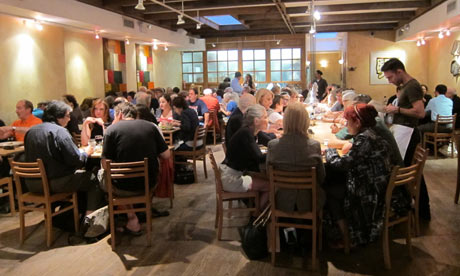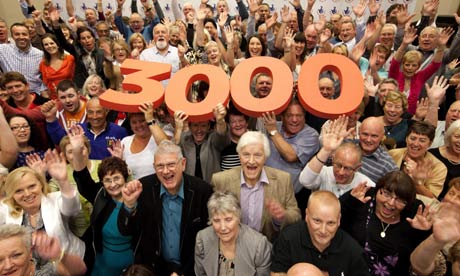S Rajesh in Cricinfo
After hanging on to the No. 1 spot for a year, England have relinquished it to South Africa, and Andrew Strauss, their captain, was quick to acknowledge that Graeme Smith's team thoroughly deserved the honour, given their recent form. England had an extremely dominant spell when they won eight out of
nine series, but since then, they've lost two out of four, and both by convincing margins - 3-0 to Pakistan and 2-0 to South Africa.
South Africa's strong run, on the other hand, has been going on for much longer: since December 2006, in
20 series, they've won 13, drawn six, and lost only one - to Australia at home in 2009, immediately after beating them in Australia earlier in the season. During this period they've won two series in England, and one each in Pakistan, Australia, New Zealand and West Indies. They haven't won a series in India in two attempts, but each time they've won a Test and drawn the series. The only country in which South Africa didn't win or draw their last series is Sri Lanka - they lost 2-0 in July-August 2006.
The big difference between the recent records for England and South Africa has been the teams' overseas performance. During England's powerful run between 2009 and 2011, most of their emphatic wins were achieved in England: Australia was the only major opposition they beat in an away series - their other overseas win was in Bangladesh, while they drew in South Africa. On the other hand, they beat West Indies, Australia, Pakistan, Sri Lanka and India at home.
India's ascent to the top spot in December 2009 was also largely based on home wins, though they also had two creditable series wins in England (in 2007) and New Zealand (2009), But out of seven
series wins between 2007 and 2009, four were achieved at home - against Pakistan, Australia, England and Sri Lanka - and one in Bangladesh. On the other hand, they lost series in Australia, South Africa and Sri Lanka during this period.
South Africa's move up the table, though, has been based on wins both home and away. In 27 away Tests since December 2009, they have a 14-4 win-loss record, with no series losses. That record dips slightly in home Tests, to 16-9 in 28 matches, with one series defeat in ten.
The table below compares the records for all teams since December 2006, excluding Tests against Zimbabwe and Bangladesh. Though Australia have a marginally better overall win-loss record during this period, South Africa have been the overwhelming champions in away Tests: they have a win-loss ratio of 3, while none of the other teams has managed even half that. England, on the other hand, have a ratio of 0.5, exactly the same as India.
Teams in Test cricket since December 2006 (excl. Tests v B'desh and Zim)
| Team | Tests | W/L | Ratio | Away Tests | W/L | Ratio |
| South Africa | 51 | 26/ 13 | 2.00 | 25 | 12/ 4 | 3.00 |
| Australia | 61 | 34/ 16 | 2.12 | 29 | 12/ 9 | 1.33 |
| Pakistan | 40 | 10/ 16 | 0.62 | 36 | 10/ 15 | 0.66 |
| England | 69 | 27/ 21 | 1.28 | 31 | 7/ 14 | 0.50 |
| India | 59 | 21/ 18 | 1.16 | 33 | 8/ 16 | 0.50 |
| Sri Lanka | 45 | 13/ 14 | 0.92 | 20 | 3/ 10 | 0.30 |
| New Zealand | 37 | 4/ 21 | 0.19 | 17 | 1/ 12 | 0.08 |
| West Indies | 46 | 6/ 22 | 0.27 | 23 | 1/ 13 | 0.07 |
A closer look at the overseas stats indicates the major differentiator between South Africa and the other teams: it's the ability of their batsmen to retain the ability to make huge scores even when playing in unfamiliar conditions. Several teams have better batting averages in home Tests than South Africa: India average 47.82, Australia 40.96, England 40.29, and Sri Lanka 39.94, while South Africa are fifth, on 35.62. (All stats exclude Tests against Zimbabwe and Bangladesh).
However, in away games, South Africa's batting is a long way better than other teams: they average 44.93, and the next best are Australia on 35.51. Even allowing for the fact that away Tests for other teams include matches in South Africa, where conditions are toughest for batting these days, the difference is huge. India's batting average overseas falls to 31, while England are slightly better at 33.48.
One of the key stats here is the number of hundreds scored by South African batsmen: in 25 overseas Tests, they've scored 41 hundreds and 55 fifties. That works out to an average of 1.64 hundreds per Test, and a fifties-to-hundreds ratio of 1.34. Both are significantly better than those of other teams. India, for example, average 0.70 hundreds per Test, and have a fifties-to-hundreds ratio of 4.26. That South African ability to convert starts into big scores was evident in the series in England too, when they turned five out of ten 50-plus scores into hundreds, including three scores of more than 180.
Meanwhile South Africa have always been blessed with high-quality bowlers, which means the efforts of their batsmen haven't gone waste. However, three other teams - Australia, Pakistan and England - have bowling averages that are similar to those of South Africa. The key difference has been the ability of the batsmen to rack up huge scores, no matter what the conditions.
Overseas stats for all teams since Dec 2006 (excl. Tests in B'desh and Zim)
| Team | Tests | Bat ave | 100s/ 50s | Wkts taken | Bowl ave |
| South Africa | 25 | 44.93 | 41/ 55 | 395 | 34.16 |
| Australia | 29 | 35.51 | 34/ 79 | 484 | 33.37 |
| Pakistan | 36 | 29.05 | 22/ 90 | 593 | 32.66 |
| England | 31 | 33.48 | 34/ 72 | 471 | 35.85 |
| India | 33 | 31.00 | 23/ 98 | 487 | 40.12 |
| Sri Lanka | 20 | 33.45 | 27/ 37 | 216 | 50.09 |
| New Zealand | 17 | 24.87 | 7/ 30 | 214 | 39.93 |
| West Indies | 23 | 29.63 | 19/ 53 | 269 | 45.17 |
Among batsmen who have scored 1500-plus overseas runs since December 2006 (excluding matches in Bangladesh and Zimbabwe), four of the top eight averages belong to South Africans. Hashim Amla and AB de Villiers have 65-plus averages, while Jacques Kallis and Graeme Smith average more than 54.
Some of the top batsmen from other teams have struggled overseas during this period. Rahul Dravid averaged only 35.10 in 33 Tests, Ricky Ponting 36.82, Virender Sehwag 36.97, and Michael Hussey 37.34. VVS Laxman averaged 70.45 in home Tests during this period, but in overseas games his average dropped to 41.35. (
Click here for the full list of batsmen in overseas games, with a 1500-run cut-off.)
Best overseas batsmen since Dec 2006 (Qual: 1500 runs, excl Tests in B'desh and Zim)
| Batsman | Tests | Runs | Average | 100s/ 50s |
| Hashim Amla | 25 | 2486 | 65.42 | 8/ 11 |
| AB de Villiers | 25 | 2147 | 65.06 | 5/ 9 |
| Shivnarine Chanderpaul | 19 | 1607 | 61.80 | 5/ 10 |
| Kumar Sangakkara | 19 | 1972 | 58.00 | 9/ 6 |
| Jacques Kallis | 24 | 2082 | 57.83 | 10/ 6 |
| Chris Gayle | 16 | 1517 | 56.18 | 4/ 4 |
| Misbah-ul-Haq | 24 | 1867 | 54.91 | 3/ 15 |
| Graeme Smith | 25 | 2286 | 54.42 | 8/ 10 |
A further break-up for these four South African batsmen shows how adept they have been against both pace and spin in overseas Tests. Amla and de Villiers average more than 70 against pace, and more than 60 against spin. Kallis' average against pace, and Smith's against spin, drop below 50, but they're still pretty impressive numbers.
On the other hand, some of the other top batsmen from other sides have struggled against either pace or spin, or in some cases both, in overseas matches. For the Indians, pace has been the problem: Dravid averaged 34.67 against fast bowling, Laxman 35.50, Sehwag 37.93 and Tendulkar 43.40; against spin Tendulkar and Laxman average more than 60, and Dravid 46.42. For England, Pietersen and Cook average marginally more than 40 against pace in overseas matches, but Ian Bell's average drops to 37.68; against spin, Cook averages 73.46, and Pietersen 48.15. Ponting averages 35 against pace and Hussey 30; against spin their averages are 61 and 52. Kumar Sangakkara, Sri Lanka's best batsman, averages 54 against pace and 64 against spin, but Jayawardene's average against pace is only 29.29.
South Africa thus have a core group of batsmen who've proved themselves to be top-class against both pace and spin in overseas Tests. There was a time when India's top four were similarly capable as well, but they didn't always have the bowling support to convert their batting class into victories. Dale Steyn and Co have ensured that South Africa don't face that problem, and the result is a well-deserved top spot in Test cricket. The challenge now will be to ensure they don't slip up like India and England did.
South Africa's top batsmen v pace and spin in overseas Tests (excl. B'desh and Zim)
| Batsman | Pace-runs | Dismissals | Average | Spin-runs | Dismissals | Average |
| Hashim Amla | 1457 | 20 | 72.85 | 1029 | 16 | 64.31 |
| AB de Villiers | 1176 | 15 | 78.40 | 963 | 15 | 64.20 |
| Jacques Kallis | 950 | 20 | 47.50 | 1107 | 16 | 69.18 |
| Graeme Smith | 1431 | 24 | 59.62 | 817 | 18 | 45.38 |


